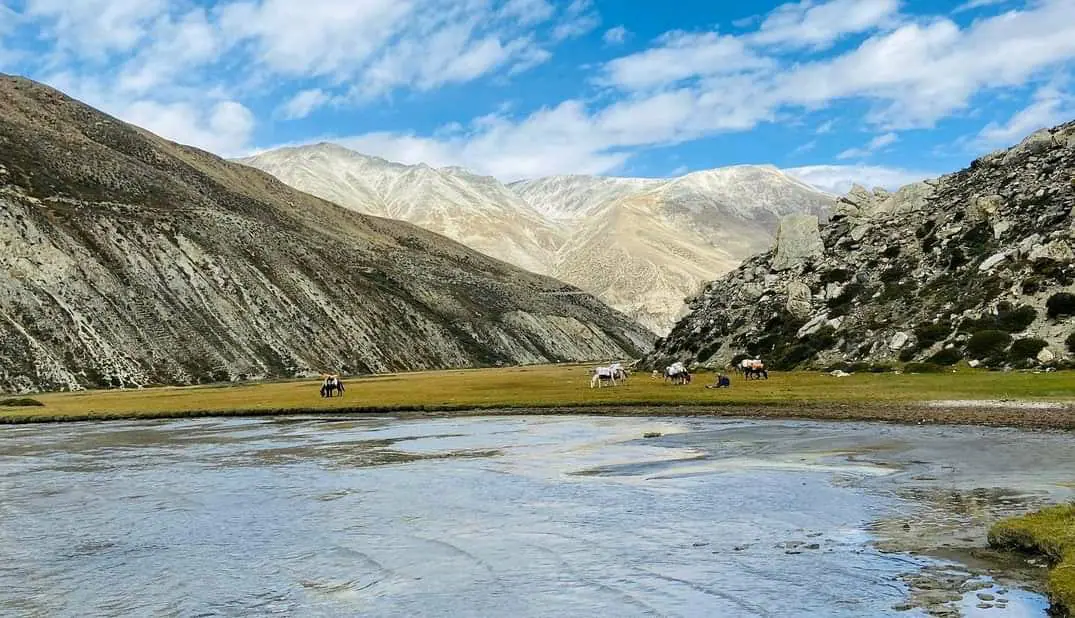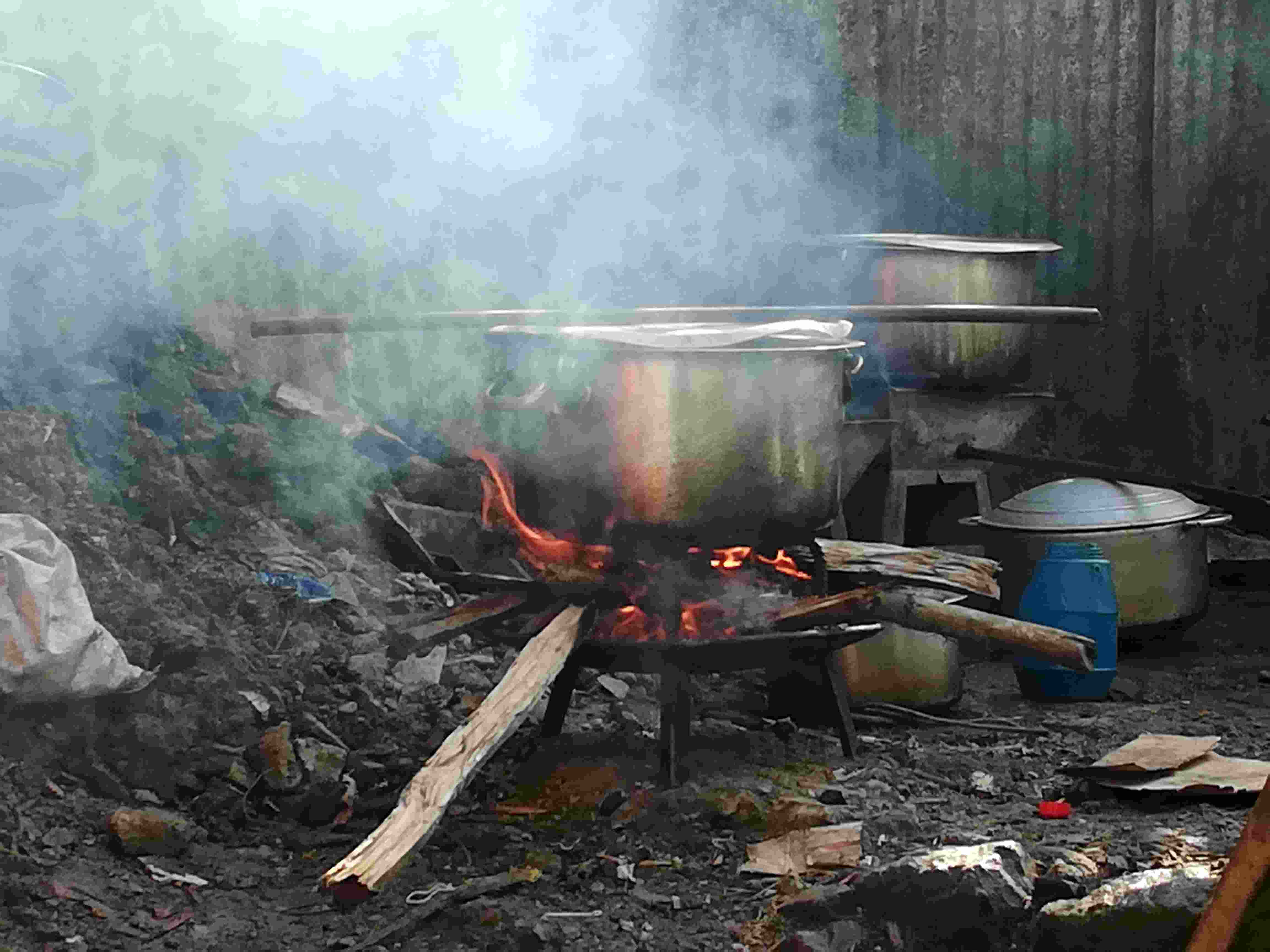Share this Article

Introduction
Situated in the Sindhupalchok district of central Nepal, Panch Pokhari is an untouched high-altitude area known for its stunning scenery, abundant biodiversity, and profound cultural importance. Situated at an altitude of 4,200 meters, Panch Pokhari, meaning "Five Ponds," serves as both a holy pilgrimage destination and a possible center for eco-tourism. Although rich in natural and cultural resources, this region is still largely uncharted, presenting a hidden treasure ready to be unveiled.
Biodiversity Zone
Panch Pokhari is a rich reservoir of biodiversity, covering an elevation range from 1,300 to 4,300 meters. A field study carried out in April 2008 recorded 110 species of vascular plants, 10 species of lichens, 32 species of mosses, 11 species of ferns, 26 species of butterflies, 22 species of avians, and 20 species of mammals. The area's varied plant life encompasses subtropical, temperate, subalpine, and alpine types, featuring species such as Rhododendron, Quercus, and Abies spectabilis that prevail in the scenery. The alpine meadows, featuring vibrant flora and rugged hills, host unique and native species, transforming Panch Pokhari into a paradise for botanists and nature lovers.
The variety of fauna is equally remarkable. The area is home to high-altitude species like the Red Panda (Ailurus fulgens), Himalayan Monal, and Blood Pheasant. Insects like Parnassius hardwickei and birds such as the Himalayan Tree Pie and Yellow-Billed Chough enrich the ecosystem with their vibrancy. Nevertheless, the region confronts dangers from poaching, as species such as musk deer and bears are sought after for their precious components.
Cultural and Religious Importance
Panch Pokhari holds great religious significance for local communities and travelers. Each year, in mid-August during the Janai Purnima festival, thousands of pilgrims flock to the holy lakes for sacred baths and to honor Lord Shiva. Another celebration, Dasahara, observed in March or April, also attracts hundreds of pilgrims. The cultural wealth of the region is accentuated by the Tamang community, which is the main ethnic group in the area. The cultural charm of Panch Pokhari is enhanced by their traditional dances, weaving customs, and distinct lifestyle.
Potential for Eco-Tourism
Panch Pokhari holds great promise to transform into a leading eco-tourism hotspot. Its picturesque landscapes, varied plant and animal life, and rich cultural heritage render it a desirable destination for tourists from both within the country and abroad. Nevertheless, the absence of infrastructure, including adequate lodging, skilled guides, and properly maintained trekking paths, has impeded its development as a tourist attraction. The area also suffers from insufficient fundamental services such as a clean water supply, waste disposal systems, and energy sources, all of which are vital for sustainable tourism.
To foster eco-tourism, various actions are required, such as the establishment of sustainable lodges, camping areas, and eateries. Training local communities in hospitality and guiding can generate job opportunities while guaranteeing that tourism positively impacts the area's residents. Moreover, promoting awareness of conservation and sustainable practices is essential for safeguarding Panch Pokhari's natural and cultural heritage.
Challenges in Conservation
Though it holds ecological importance, Panch Pokhari encounters various conservation issues. The nearby communities depend significantly on forest resources for lumber, firewood, and livestock feed, resulting in deforestation and habitat destruction. Grazing by livestock, especially in alpine meadows, intensifies the strain on the ecosystem. The illegal hunting of wildlife, such as musk deer and bears, continues to pose a major risk, emphasizing the necessity for stronger enforcement of conservation regulations.
Initiatives to catalog the region's biodiversity, as carried out in the 2008 study, are crucial for establishing a foundation for forthcoming conservation efforts. Informing local communities about the significance of biodiversity and sustainable practices can create a sense of ownership and duty in safeguarding their natural heritage.
The Path Ahead
Panch Pokhari is a distinct mix of scenic beauty, diverse wildlife, and cultural value. Through effective planning and administration, it can develop into a leading eco-tourism site that harmonizes economic growth with environmental protection. The engagement of local communities, governmental bodies, and conservation groups is essential for reaching this objective. Through the promotion of sustainable tourism and the adoption of effective conservation methods, Panch Pokhari can persist as a haven for nature and culture.
In-Depth Investigation of Biodiversity
The biodiversity found in Panch Pokhari mirrors its diverse altitudinal regions. The subtropical zone, spanning elevations of 1,000 to 2,000 meters, features oak forests (Quercus lanata) along with mixed broadleaf forests. These woodlands contain numerous plant species, such as Rhododendron, Alnus, and Lyonia. The temperate zone, ranging from 2,000 to 3,000 meters, is primarily characterized by species such as Rhododendron, Quercus, and Berberis aristata. The soil vegetation in this area comprises Duchesnea indica, Fragaria nubicola, and Vaccinum nummularia.
The subalpine zone, located between 3,000 and 4,000 meters, is marked by thick woodlands of Rhododendron campanulatum and Abies spectabilis. The alpine zone, situated above 4,000 meters, is characterized by vibrant green meadows mixed with rocky inclines. In this area, species such as Rhododendron lepidotum, R. anthopogon, and Juniperus recurve are frequently found. The meadows also host several types of herbs from the Poaceae, Cyperaceae, and Rosaceae families.
Animal Diversity
The variety of fauna in Panch Pokhari is a reflection of its ecological wealth. The area hosts a range of mammals, such as the Red Panda, Langur Monkey, Assamese Monkey, and Civet Cat. The existence of these species highlights the necessity for efficient conservation efforts to safeguard their environments. The avian population in Panch Pokhari is similarly varied, featuring species such as the Himalayan Monal, Blood Pheasant, and different finches that enhance the bird diversity. The butterfly population in the region, featuring species such as Parnassius hardwickei and Pieris brassicae, significantly boosts its ecological importance.
Cultural Traditions and Means of Living
The communities in Panch Pokhari share a strong bond with their surroundings. Despite being constrained by severe climate conditions, agriculture serves as the main source of income for many. In the lower elevations, the primary crops include potatoes, wheat, and maize, whereas in the higher areas, apples and berries are grown. Raising livestock is another significant activity, with cows, buffaloes, and yaks as the main animals. Nevertheless, the communities encounter difficulties due to wildlife predation, as bears and leopards frequently hunt their livestock.
The culturally rich region is enhanced by the traditional practices of the Tamang community, such as weaving and bamboo artistry. Women in the Botang village engage in weaving wool garments and carpets, utilizing traditional wooden looms. These activities not only serve as a means of earning but also aid in maintaining the cultural heritage of the area
.
Spiritual Celebrations and Journeys
Panch Pokhari is an important pilgrimage destination, drawing thousands of worshippers during the Janai Purnima and Dasahara celebrations. The Janai Purnima festival, occurring in mid-August, features pilgrims bathing in holy waters of sacred lakes and conducting rituals to pay tribute to Lord Shiva. The Dasahara festival, held in March or April, attracts many devotees who arrive to worship and engage in the religious rituals. These celebrations hold religious importance while also boosting the local economy by drawing in tourists.
Sustainable Tourism Advancement
The advancement of eco-tourism in Panch Pokhari necessitates a holistic strategy that harmonizes economic growth with ecological preservation. Essential infrastructure requirements encompass the creation of sustainable lodges, dining establishments, and camping areas. Educating local communities in hospitality and guiding can generate job opportunities and guarantee that tourism advantages the area's residents. Moreover, the creation of trekking paths, waste disposal systems, and renewable energy options is crucial for sustainable tourism.
Advocating for Panch Pokhari as an eco-tourism site includes enhancing understanding of its environmental and cultural assets. Brochures filled with information, guided excursions, and cultural initiatives can draw in visitors while teaching them the significance of conservation. Engaging local communities in tourism efforts can cultivate a sense of ownership and accountability, making certain that the advantages of tourism are distributed fairly.
Education and Awareness in Conservation
Conservation education plays a vital role in the sustainable development of Panch Pokhari. The local communities, while closely tied to their surroundings, frequently have little understanding of the ecological importance of their natural assets. Conservation education initiatives can assist in closing this gap by offering insights into the significance of biodiversity, sustainable methods, and the advantages of eco-tourism.
The 2008 study's efforts to record the region's biodiversity are crucial for establishing a foundation for future conservation projects. Consistent monitoring and evaluation can aid in observing shifts in the ecosystem and guide conservation efforts. Cooperation among government bodies, conservation groups, and local populations is essential for guaranteeing the enduring safeguarding of Panch Pokhari's natural and cultural heritage.
Conclusion
Panch Pokhari is a distinct combination of natural splendor, diverse wildlife, and cultural heritage. Through effective planning and management, it has the potential to become a leading eco-tourism site that harmonizes economic growth with environmental protection. The participation of local communities, governmental bodies, and conservation groups is essential for reaching this objective. Through the advancement of sustainable tourism and the application of efficient conservation methods, Panch Pokhari can persist as a haven for nature and culture.
In conclusion, Panch Pokhari is more than a location; it is an experience that presents a view of the pristine beauty of the Himalayas. With growing efforts to conserve and promote this area, it could serve as a prime example of the harmonious coexistence of tourism and conservation. The trek to Panch Pokhari is more than a physical journey; it is an exploration into nature, culture, and spirituality.
Categories:
Travel & Tourism
,
Adventure Activities
,
Nature & Wildlife
Tags:
Pach Pokhari
,
Nature







